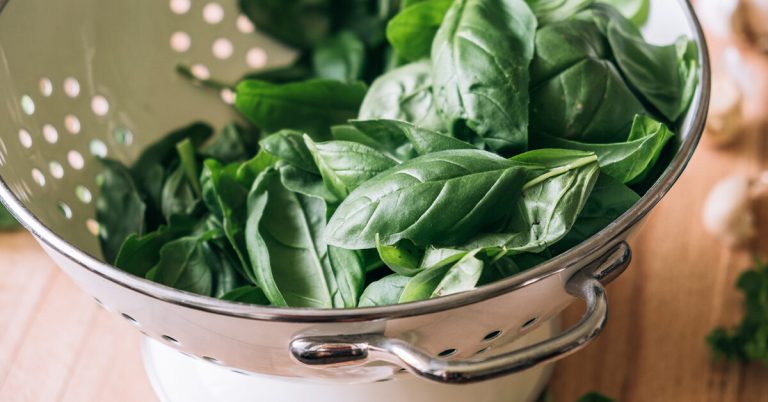When you eat has a big effect on your microbiome. Discover the meal schedule that helps your good bugs thrive.
There are trillions of microorganisms living in your intestines, helping to break down your food and make nutrients, like B vitamins and vitamin K. When these organisms digest dietary fiber, they create compounds that researchers are finding are critical to muscle function and disease prevention. Our gut bugs even affect our emotions and cognition, sending signals between the brain and the digestive system. “We really rely on them and need them,” says Suzanne Devkota, PhD, director of microbiome research at the F. Widjaja Foundation Inflammatory Bowel and Immunobiology Research Institute at Cedars-Sinai in Los Angeles. “They play a fundamental nutritional role for us.”
Feed your microbes the right stuff, the wisdom goes, and the balance of good bugs to bad will stay in check, giving you major health benefits. But it turns out, it’s not just what you eat that impacts the delicate balance of microorganisms in your gut. New research finds that when you eat (and perhaps more important, when you don’t) affects your microbiome in a big way.
Timing is everything
Intermittent fasting can be done on a variety of schedules. With a weekly intermittent-fasting schedule, you restrict what you eat two to three nonconsecutive days per week. Another type of fasting, time-restricted feeding, is basically what it sounds like: You restrict your eating to a certain numbers of hours each day, fasting during the remaining time. Research suggests that both methods can lead to weight loss, improved metabolic function, and a lower risk of diabetes and cancer. (Of note: Women who are pregnant or breastfeeding, and those who have a history of disordered eating, should not try any form of fasting.)
Intermittent fasting can also change the makeup of your microbiome. “Your gut bacteria are very responsive to the presence and absence of food,” explains Devkota. “When you remove food, the microbiome shifts in composition.” There’s a rapid expansion of a particular bacteria (Akkermansia muciniphila) that is associated with positive health markers, like decreased intestinal inflammation and a healthier gut barrier.
Animal studies show that the microbiome has its own circadian rhythm and is constantly cycling between different populations, explains Amir Zarrinpar, MD, PhD, an assistant professor of gastroenterology at the University of California San Diego School of Medicine who studies the gut microbiome. He hypothesizes that in humans, when you’re asleep and not eating, one set of bacteria may thrive. When you wake up and start to eat, others may bloom and take over. The cycle repeats every 24 hours but can get thrown off when you eat off-schedule or consume an unhealthy diet. Time-restricted feeding can reinforce and help reinstate those naturally occurring fluctuations, reports a paper coauthored by Dr. Zarrinpar and published in the journal Trends in Endocrinology & Metabolism in 2016.
Fasting 411
There are many varieties of fasting patterns, but two of the more popular iterations are 16:8, where you fast for 16 hours out of every 24 and eat during the remaining 8, and 5:2, where you eat normally for 5 days of the week and severely restrict your calories for 2 nonconsecutive days.
There are pros and cons to each. Devkota likes the 5:2 plan—she says the blooming of beneficial bacteria just starts to kick in after 16 to 18 hours of fasting in mice; for humans, you’d have to fast longer to see the effect. “If you want to see changes at the cellular or microbiome level, you have to push the fasting period longer,” she says. However, she stresses, the fasting days don’t have to be completely devoid of calories. Most plans recommend a 70–75 percent reduction in calories on fasting days, but even reducing 60 percent could make a difference, she says.
Other experts suggest the 16:8 protocol, where you prolong your overnight fast each day by eating breakfast slightly later and finishing your last meal in the early evening, so your eating window is just 8 hours. But even a less intense version shows beneficial health effects, says Dorothy Sears, PhD, professor of medicine at the University of California San Diego School of Medicine. She suggests 12 to 14 hours of fasting overnight, with your eating window ending between 5 and 8 p.m.
Don’t restrict your calorie intake during the eating periods; most of your gut bugs need food to survive, says Devkota. When your body enters starvation mode—like if you fast for too long—you’ll decrease the diversity of bacteria in your gut, she says, which is why she advises making sure your fasting is “truly intermittent” and that you never fast for two days in a row.
Eating by the clock
A fasting regimen on a 24-hour cycle (like 16:8 or a 14:10 breakdown) allows you to align your fasting with your natural sleep/wake cycles. Sears says this is important because circadian rhythms regulate the processing of nutrients. For example, insulin is most effective in the morning and midday; in the evening and overnight, you have higher levels of hormones like melatonin that interfere with insulin action. “If you eat a snack at night, the insulin you secrete to process it isn’t going to function as well as if you ate that same food for breakfast,” she says. Since your insulin response—which is responsible for shuttling sugar from your bloodstream into your cells—is dampened, your blood sugar will stay higher for longer, she explains. If that happens repeatedly, it can increase your risk for cardiovascular disease, type 2 diabetes, and cancer. By eating breakfast a touch later (say, 8 a.m.) and moving dinner a bit earlier (finishing around 6 p.m.), you can align your food intake with your circadian rhythm and still get that prolonged overnight fast without too much extra effort.
This article originally appeared in the October 2020 issue of Health Magazine.
















